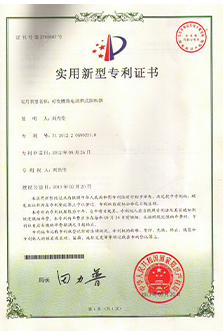 Afrikaans
Afrikaans  Albanian
Albanian  Amharic
Amharic  Arabic
Arabic  Armenian
Armenian  Azerbaijani
Azerbaijani  Basque
Basque  Belarusian
Belarusian  Bengali
Bengali  Bosnian
Bosnian  Bulgarian
Bulgarian  Catalan
Catalan  Cebuano
Cebuano  Corsican
Corsican  Croatian
Croatian  Czech
Czech  Danish
Danish  Dutch
Dutch  English
English  Esperanto
Esperanto  Estonian
Estonian  Finnish
Finnish  French
French  Frisian
Frisian  Galician
Galician  Georgian
Georgian  German
German  Greek
Greek  Gujarati
Gujarati  Haitian Creole
Haitian Creole  hausa
hausa  hawaiian
hawaiian  Hebrew
Hebrew  Hindi
Hindi  Miao
Miao  Hungarian
Hungarian  Icelandic
Icelandic  igbo
igbo  Indonesian
Indonesian  irish
irish  Italian
Italian  Japanese
Japanese  Javanese
Javanese  Kannada
Kannada  kazakh
kazakh  Khmer
Khmer  Rwandese
Rwandese  Korean
Korean  Kurdish
Kurdish  Kyrgyz
Kyrgyz  Lao
Lao  Latin
Latin  Latvian
Latvian  Lithuanian
Lithuanian  Luxembourgish
Luxembourgish  Macedonian
Macedonian  Malgashi
Malgashi  Malay
Malay  Malayalam
Malayalam  Maltese
Maltese  Maori
Maori  Marathi
Marathi  Mongolian
Mongolian  Myanmar
Myanmar  Nepali
Nepali  Norwegian
Norwegian  Norwegian
Norwegian  Occitan
Occitan  Pashto
Pashto  Persian
Persian  Polish
Polish  Portuguese
Portuguese  Punjabi
Punjabi  Romanian
Romanian  Russian
Russian  Samoan
Samoan  Scottish Gaelic
Scottish Gaelic  Serbian
Serbian  Sesotho
Sesotho  Shona
Shona  Sindhi
Sindhi  Sinhala
Sinhala  Slovak
Slovak  Slovenian
Slovenian  Somali
Somali  Spanish
Spanish  Sundanese
Sundanese  Swahili
Swahili  Swedish
Swedish  Tagalog
Tagalog  Tajik
Tajik  Tamil
Tamil  Tatar
Tatar  Telugu
Telugu  Thai
Thai  Turkish
Turkish  Turkmen
Turkmen  Ukrainian
Ukrainian  Urdu
Urdu  Uighur
Uighur  Uzbek
Uzbek  Vietnamese
Vietnamese  Welsh
Welsh  Bantu
Bantu  Yiddish
Yiddish  Yoruba
Yoruba  Zulu
Zulu Different Types of Conveyor Pulleys and Their Applications in Material Handling
Understanding Conveyor Pulley Types An Essential Component in Material Handling
Conveyor systems are integral to various industries, especially those involved in material handling, mining, and manufacturing. At the heart of these systems lies the conveyor pulley, which plays a critical role in the efficiency and effectiveness of the operation. Understanding the different types of conveyor pulleys is essential for anyone involved in designing, maintaining, or operating conveyor systems.
What is a Conveyor Pulley?
A conveyor pulley is a mechanical device used to drive, redirect, or transfer materials along a conveyor belt. These pulleys are essential components that ensure the smooth operation of conveyor systems, impacting not only efficiency but also the longevity of the conveyor and its associated machinery.
Types of Conveyor Pulleys
1. Drive Pulley
The drive pulley is crucial as it provides the necessary force to move the conveyor belt. Located at the head of the conveyor, it is connected to a motor that powers the system. Drive pulleys are typically larger in diameter than other types, allowing them to effectively manage the belt’s speed and tension. They are designed with a robust structure to withstand the torque produced by the motor.
2. Idler Pulley
Idlers are used to support the conveyor belt and maintain tension along the length of the conveyor. They are placed at various intervals along the conveyor system, ensuring the belt maintains proper alignment and stability. Idler pulleys assist in minimizing belt sag and wear, which can ultimately increase the life span of the conveyor system. Common configurations for idler pulleys include trough, flat, and return idlers, each chosen based on the specific application.
3. Tail Pulley
conveyor pulley types

The tail pulley is located at the opposite end of the drive pulley and serves multiple functions. It helps in returning the belt after it has dispensed materials and provides the right tension for the entire system. Depending on the design, tail pulleys can also aid in the discharge of materials, making them an essential component in many conveyor layouts.
4. Snub Pulley
Snub pulleys are used to increase the wrap angle of the conveyor belt around the drive pulley. By doing so, they improve traction between the belt and the drive pulley, enhancing the overall efficiency of the system. Snub pulleys are typically found in situations where additional tension is required or where the drive pulley is not able to provide enough friction to move the load.
5. Return Pulley
Return pulleys are used in the system’s return section, guiding the belt back to the drive pulley after material has been transported. These pulleys are crucial for maintaining belt tension and alignment during the return journey. They are often designed to minimize wear, as they encounter the lower tension and lighter loads compared to other pulleys.
6. Wing Pulley
Wing pulleys feature a unique design that includes wings or fins, which reduce the contact area with the belt. This design minimizes friction and wear, making them ideal for systems where materials may aggressively impact the pulley. Wing pulleys are often used in bulk handling applications and environments that demand high durability due to abrasive materials.
Conclusion
Selecting the appropriate type of conveyor pulley is vital for the efficiency, reliability, and longevity of conveyor systems. Each type of pulley serves a specific purpose, whether it be driving the belt, supporting it, or facilitating material transfer. By understanding the various options available, engineers and operators can ensure their conveyor systems are optimized for performance, ultimately leading to reduced maintenance costs and improved throughput. Whether working in mining, manufacturing, or logistics, recognizing the importance of conveyor pulley types is a key factor in achieving operational excellence.
In sum, investing time in understanding these components can yield significant benefits in material handling efficiency and system durability.
-
Revolutionizing Conveyor Reliability with Advanced Rubber Lagging PulleysNewsJul.22,2025
-
Powering Precision and Durability with Expert Manufacturers of Conveyor ComponentsNewsJul.22,2025
-
Optimizing Conveyor Systems with Advanced Conveyor AccessoriesNewsJul.22,2025
-
Maximize Conveyor Efficiency with Quality Conveyor Idler PulleysNewsJul.22,2025
-
Future-Proof Your Conveyor System with High-Performance Polyurethane RollerNewsJul.22,2025
-
Driving Efficiency Forward with Quality Idlers and RollersNewsJul.22,2025





























